Marigold and Bee
About five years ago I bought a flat of marigolds at a garden show in Rockford, Illinois. The flat cost only five dollars. I presumed the marigolds were neither organic nor open pollinated, but they looked strong and there were a lot of plants for the money. I thought I would stick marigolds at the ends of the raised beds to add some easy and quick color.
Marigolds in the Beds
This was in June. The plants performed well and bloomed until hard freezes came. They put out seed heads with lots of viable seeds meaning they were open-pollinated, not a hybrid variety. On a whim I saved some seed and replanted it the following spring. Marigolds are slow to germinate and the germination rate on these seeds wasn’t great, but I still got a lot of new plants from which I’ve continued to save seed and replant.
Marigolds Everywhere
Both the seeds and the plants I’m growing now seem more vigorous than the first ones I planted. Marigolds are adaptable, which means they improve their hardiness over time in a new environment. I went overboard this year and ended up with several hundred seedlings, most of which I replanted all around the garden.
Bee and Marigolds
The marigolds are proving to be great for their ability to attract and feed pollinating insects right up to and through the early frosts. They continue to provide heavy blooms offering pollen and nectar as well or better than just about any garden flower this late in the season. Marigolds are also touted as having beneficial properties when grown alongside tomatoes and other vegetables and their roots are supposed to be soil cleaning, eliminating certain bad root nematodes.
Bee on Marigold
Moth on Marigold
I found numerous articles on the Internet claiming marigolds are a bee repellent and not attractive or useful to pollinators, but there are even more articles debunking the “bad marigold” claims. While there may be some hybrid or double blossom marigolds which may not attract or be useful to pollinators, I can attest that bees love marigolds as do numerous other insects. I have often found the blossoms swarming with various flies, moths and butterflies.
Bumblebee on Marigold
Marigolds are very useful when used as an herbal and they are edible. So why not grow some? They’re too good and too easy not to.

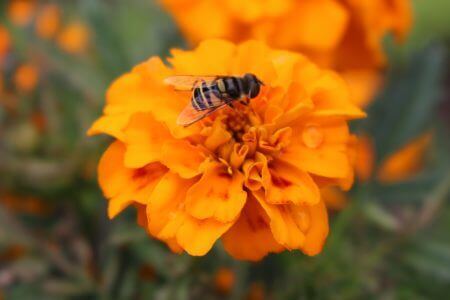
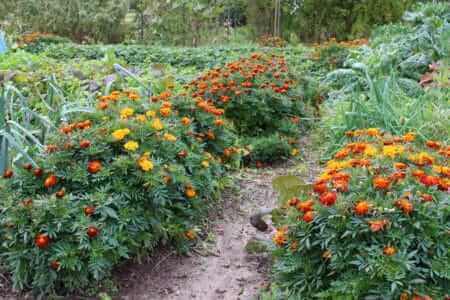
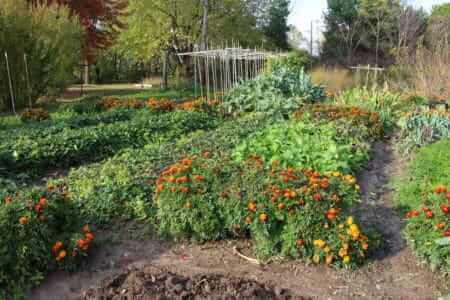
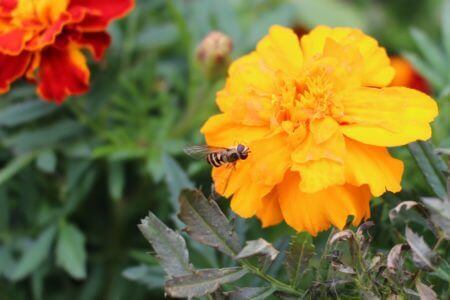
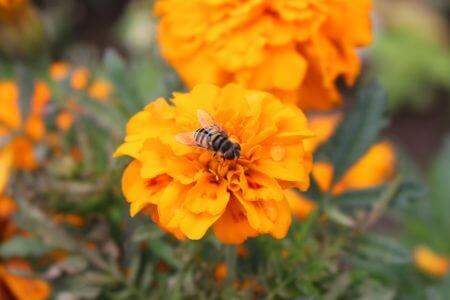
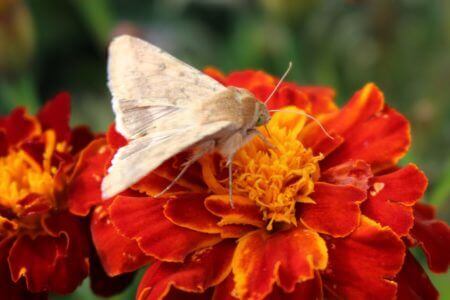
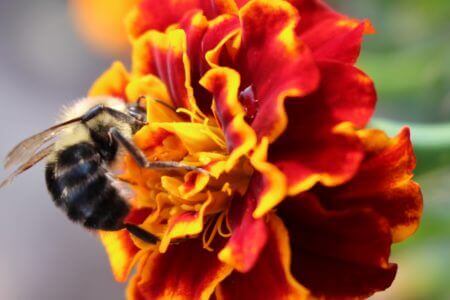
Thanks for the article on Marigolds. I’ve noticed this year that this is one of the annuals that seems to grow undeterred well into the autumn around Madison, WI, where I live. I have plans to plant some marigolds next year. The additional information about seeds, etc. is really helpful.
On the topic of the Cobrahead – I bought one last year at Madison’s Garden Expo. It has become my favorite garden tool! It’s great for weeding, tilling and planting. I’m so glad to have the Cobrahead.
Best Wishes!
Liz
Liz, in the garden yesterday (November 1st) the marigolds were loaded with bees, moths and flies. They are usually one of the last flowers standing, so their importance for pollinators is obvious. Thanks for the nice words about CobraHead.